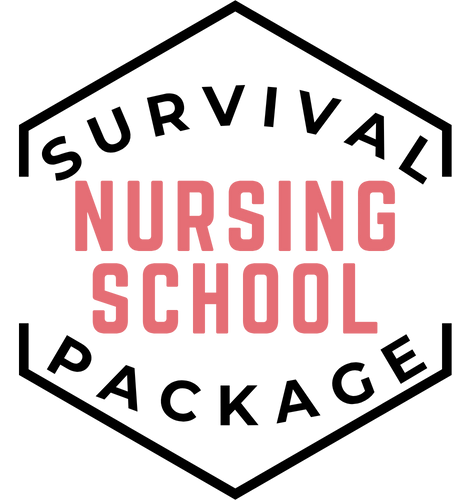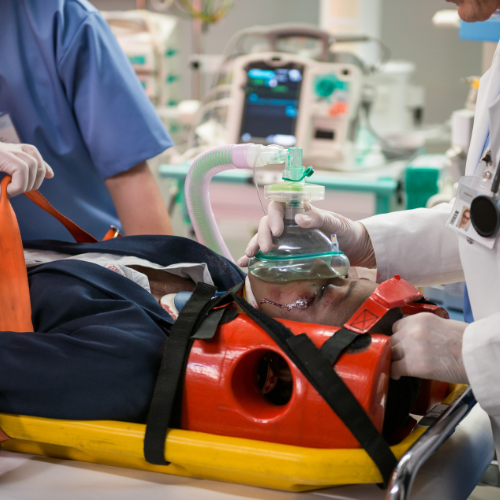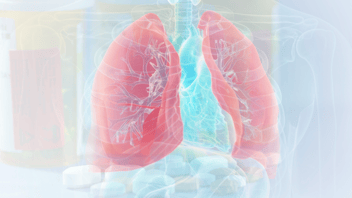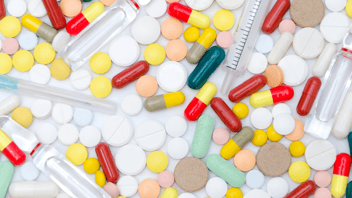How to Learn Pharmacology Fast For Nursing School and The NextGen NCLEX
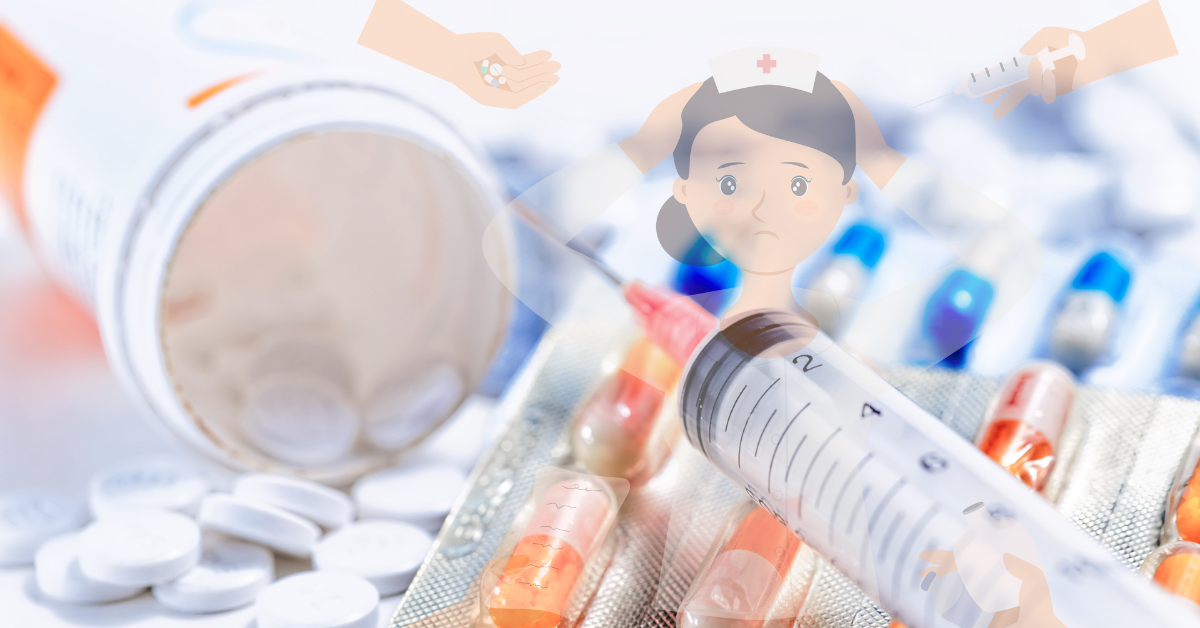
The Beginning of My Nursing Journey
From a young age, I always knew I wanted to do something in the medical field. In fact, as a small child, I would spend hours and hours watching episodes of "Rescue 911" (yeah, I am pretty sure that just aged me a bit).
Many of you know my story of how I eventually went to nursing school and how I am where I am now, so let's fast-forward (and rewind 😉) to the semester I was introduced to nursing PHARMACOLOGY!!!!
On the first day of nursing pharmacology, I knew nursing pharmacology would test my resilience and determination.
The sheer volume of information overwhelmed me. Drug names, mechanisms of action, interactions, side effects, and dosage calculations all seemed like an insurmountable mountain of knowledge. Every class was a whirlwind of new drugs, and I struggled to keep up with the rapid pace of learning.
I knew I had to come up with a way to learn nursing pharmacology fast in order to do well on my nursing school exams and the NCLEX (NextGen NCLEX wasn't around when I graduated nursing school)
How I Learned Nursing Pharmacology Fast
Learning nursing pharmacology, like any subject, requires time and effort. What I found to be the absolute game changer for me was . . .
Pharmacology Nursing Mnemonics
To remember drug names or side effects, I developed memorable phrases or acronyms. These mnemonics made the information stick in my mind and brought a sense of fun to my nursing school studies.
In this blog post, I am going to give you my top 10 nursing pharmacology mnemonics that I used in nursing school and you can too!
Drugs Covered in This Blog Post
|
|
Why Use Nursing Pharmacology Mnemonics
Nursing pharmacology mnemonics can be incredibly helpful for several reasons. These are the reasons why I used pharmacology mnemonics while preparing for my nursing pharmacology exams and the NCLEX.
- Memory aid: Mnemonics serve as memory aids, helping nursing students remember complex information more easily. By condensing a lengthy list of drug names, side effects, or key points into a memorable phrase or acronym, mnemonics provide a mental hook that facilitates recall. They simplify information and make it more manageable, especially when dealing with a large volume of drugs.
- Visualization: Mnemonics often involve creating vivid mental images or associations. Our brains are wired to remember visual information better than abstract concepts. By visualizing the mnemonic, nursing students can link it to the desired information, making it easier to retrieve later.
- Retention through repetition: Mnemonics often involve repetition, whether it's through reciting the mnemonic or reviewing it frequently. Repetition is a powerful tool for memory consolidation. By repeating the mnemonic and associated information, nursing students reinforce their learning and improve long-term retention.
Overall, nursing pharmacology mnemonics provide a structured and creative approach to learning complex information. By incorporating mnemonics into their study routine, nursing students can navigate the challenges of pharmacology more effectively.
Anticholinergics – Side Effects Pharmacology Nursing Mnemonic
What are Anticholinergics Drugs
Anticholinergics are medications that block the effects of acetylcholine, a neurotransmitter. They are used to treat respiratory conditions like COPD and asthma by relaxing airway muscles.
Pharmacology Nursing Mnemonic for Anticholinergics - Side Effects
“Anti” means NOT - so these are all the things they CAN’T do because of
Anticholinergics (Side Effects)
4 Can’ts
| CAN'T | See – blurred vision |
| CAN'T | Pee – urinary retention |
| CAN'T | Spit – dry mouth |
| CAN'T | S*** – constipation |
Beta 1 and Beta 2 Pharmacology Nursing Mnemonic
What are Beta 1 and Beta 2 Drugs
Beta-1 drugs target receptors in the heart, while beta-2 drugs target receptors in the lungs and blood vessels. Beta-1 drugs affect heart function, and beta-2 drugs promote bronchodilation in the lungs.
Pharmacology Nursing Mnemonic for Beta 1 and Beta 2 Drugs
Beta 1 adrenergic receptors are mostly found in the heart. Beta 2 adrenergic
receptors are found in lungs, GI tract, vascular smooth muscle, skeletal muscle,
liver. Beta 1 beta blockers act primarily on the heart. Beta 2 beta blockers act
primarily on the lungs.
1 Heart, 2 Lungs
| BETA | 1-One Heart |
| BETA | 2-Two Lungs |
Drugs for Bradycardia & Low Blood Pressure Pharmacology Nursing Mnemonic
What are Drugs for Bradycardia & Low Blood Pressure
Medications for bradycardia and low blood pressure include:- Atropine: Increases heart rate.
- Epinephrine: Raises heart rate and blood pressure.
- Dopamine: Improves heart rate and cardiac output.
- Isoproterenol: Increases heart rate.
Pharmacology Nursing Mnemonic for Drugs for Bradycardia & Low Blood Pressure
This refers to symptomatic bradycardia and hypotension. Bradycardia and hypotension are not necessarily adverse clinical findings requiring treatment in and of themselves.
IDEA
| I | Isoproterenol |
| D | Dopamine |
| E | Epinephrine |
| A | Atropine |
Drug Interactions Pharmacology Nursing Mnemonic
What are Drug Interactions
Drug interactions occur when two or more medications interact and affect each other's effects or metabolism in the body, potentially leading to changes in efficacy or safety.
Pharmacology Nursing Mnemonic for Drug Interactions
Coumadin and ilosone: Ilosone can increase the effects of Coumadin, and increase
the risk of bleeding. Coumadin and Dilantin: potential for increased effects of both.
Coumadin and Dilantin: Increased Coumadin metabolism (decreased effect).
Theophylline and Dilantin: if taken orally they can interfere with the absorption of
each other and decrease the medication effect.
These Drugs Can Interact
| T | Theophylline |
| D | Dilantin |
| C | Coumadin |
| I | llosone (Erythromycin) |
Emergency Drugs Pharmacology Nursing Mnemonic
What are Emergency Drugs
Emergency drugs are medications used in critical situations to stabilize patients. Examples include epinephrine for allergic reactions and cardiac arrest.
Pharmacology Nursing Mnemonic for Emergency Drugs
The below drugs work in a variety of emergency settings, they are good drugs to
LEAN on. Lidocaine can be used in emergency situations for ventricular arrhythmias. Epinephrine is a vital drug in the ACLS protocol. Atropine can be given with
symptomatic bradycardia. Narcan is a reversal agent for opiate overdose.
LEAN
| L | Lidocaine |
| E | Epinephrine |
| A | Atropine SulfateNarcan |
| N | Narcan |
Lidocaine Toxicity – Signs and Symptoms Pharmacology Nursing Mnemonic
What is Lidocaine Toxicity
Lidocaine toxicity occurs when there is an excessive level of lidocaine in the body, resulting in symptoms such as dizziness, confusion, restlessness, tremors, seizures, and cardiovascular effects.
Pharmacology Nursing Mnemonic for Lidocaine Toxicity – Signs and Symptoms
Lidocaine is an anesthetic that prevents painful impulses from reaching the brain.
These are signs that the patient may have had too much lidocaine (like buying in
bulk)
SAMS
| S | Slurred Speech |
| A | Altered Central Nervous System |
| M | Muscle Twitching |
| S | Seizures |
Steroids - Side Effects Pharmacology Nursing Mnemonic
What are Steroid Drugs
Steroids, also known as corticosteroids or glucocorticoids, are a class of medications that mimic the effects of hormones produced by the adrenal glands. They are commonly used to reduce inflammation and suppress the immune system in various medical conditions. Steroids have anti-inflammatory properties and can be prescribed to manage conditions such as asthma, rheumatoid arthritis, allergies, and certain skin conditions.
Pharmacology Nursing Mnemonic for Steroids - Side Effects
Steroids are an effective treatment for asthma, COPD, Crohn’s, Lupus, and more.
However, they have the potential for very serious side effects, which are indicated by the 6 S’s. Steroids can be taken by mouth, via an inhaler, topically, or via injection.
6 S’s
| S | Sugar – hyperglycemia |
| S | Soggy Bones – causes osteoporosis |
| S | Sick – decreased immunity |
| S | Sad – depression |
| S | Salt–water and salt retention (hypertension) |
| S | Sex – decreased libido |
Vitamins - Water Soluble Pharmacology Nursing Mnemonic
What are Vitamins - Water Soluble Drugs
Water-soluble vitamins are a group of essential nutrients that dissolve in water and are not stored in the body. They include vitamin C and the B-complex vitamins (B1, B2, B3, B5, B6, B7, B9, B12). These vitamins play important roles in energy metabolism, nerve function, red blood cell production, and overall health. Since water-soluble vitamins are not stored, excess amounts are excreted in urine, making regular intake necessary to maintain optimal levels.
Pharmacology Nursing Mnemonic for Vitamins - Water Soluble
To remember which vitamins are water soluble, remember that you take your Birth
Control with water. So, Vitamins B and C are water-soluble. The rest of the vita-
mins are fat soluble.
Birth Control
| B | Vitamin B |
| C | Vitamin C |
Vitamins - Fat Soluble Pharmacology Nursing Mnemonic
What are Vitamins - Fat Soluble Drugs
Fat-soluble vitamins are a group of vitamins that are soluble in fats and oils. They include vitamin A, vitamin D, vitamin E, and vitamin K. Unlike water-soluble vitamins, fat-soluble vitamins can be stored in the body's fatty tissues and liver for later use.
These vitamins play various roles in the body, such as promoting healthy vision (vitamin A), aiding in calcium absorption and bone health (vitamin D), acting as antioxidants (vitamin E), and contributing to blood clotting (vitamin K). It's important to note that excess intake of fat-soluble vitamins can accumulate in the body and lead to toxicity, so it's essential to follow recommended intake guidelines.
Pharmacology Nursing Mnemonic for Vitamins - Fat Soluble
Vitamins A, D, E, and K are all fat soluble vitamins. Dogs get fat eating too much
kibble.
All Dogs Eat Kibble
| A | Vitamin A |
| D | Vitamin D |
| E | Vitamin E |
| K | Vitamin K |
SSRI’s Pharmacology Nursing Mnemonic
What are SSRI's Drugs
SSRI stands for Selective Serotonin Reuptake Inhibitors. They are a class of medications commonly used to treat depression, anxiety disorders, and other mental health conditions. SSRIs work by blocking the reuptake of serotonin, a neurotransmitter involved in regulating mood, in the brain.
By increasing the levels of serotonin in the brain, SSRIs help improve mood and alleviate symptoms of depression and anxiety.
Pharmacology Nursing Mnemonic for SSRI's
SSRI’s are antidepressant medications. These are the most common.
Effective For Sadness, Panic, & Compulsions
| E | Escitalopram |
| F | Fluoxetine |
| S | Sertraline |
| P | Paroxetine |
| C | Citalopram |
Learning Nursing Pharmacology Can Be Challenging
However, with the right techniques and tools, you can navigate this complex subject and excel in your exams. Mnemonics, in particular, can be a valuable resource to help you remember drug information and enhance your understanding of pharmacology.
Ultimately, the goal is not just to pass your pharmacology exams, but to develop a solid foundation of drug knowledge that will serve you throughout your nursing journey.
By creating clever word associations or visual aids, mnemonics offer a creative and effective way to retain and recall important drug facts.
By utilizing these 10 nursing pharmacology mnemonics, you can enhance your understanding, boost your confidence, and excel in your next pharmacology exam.
You Can Do This!
Happy Nursing!



